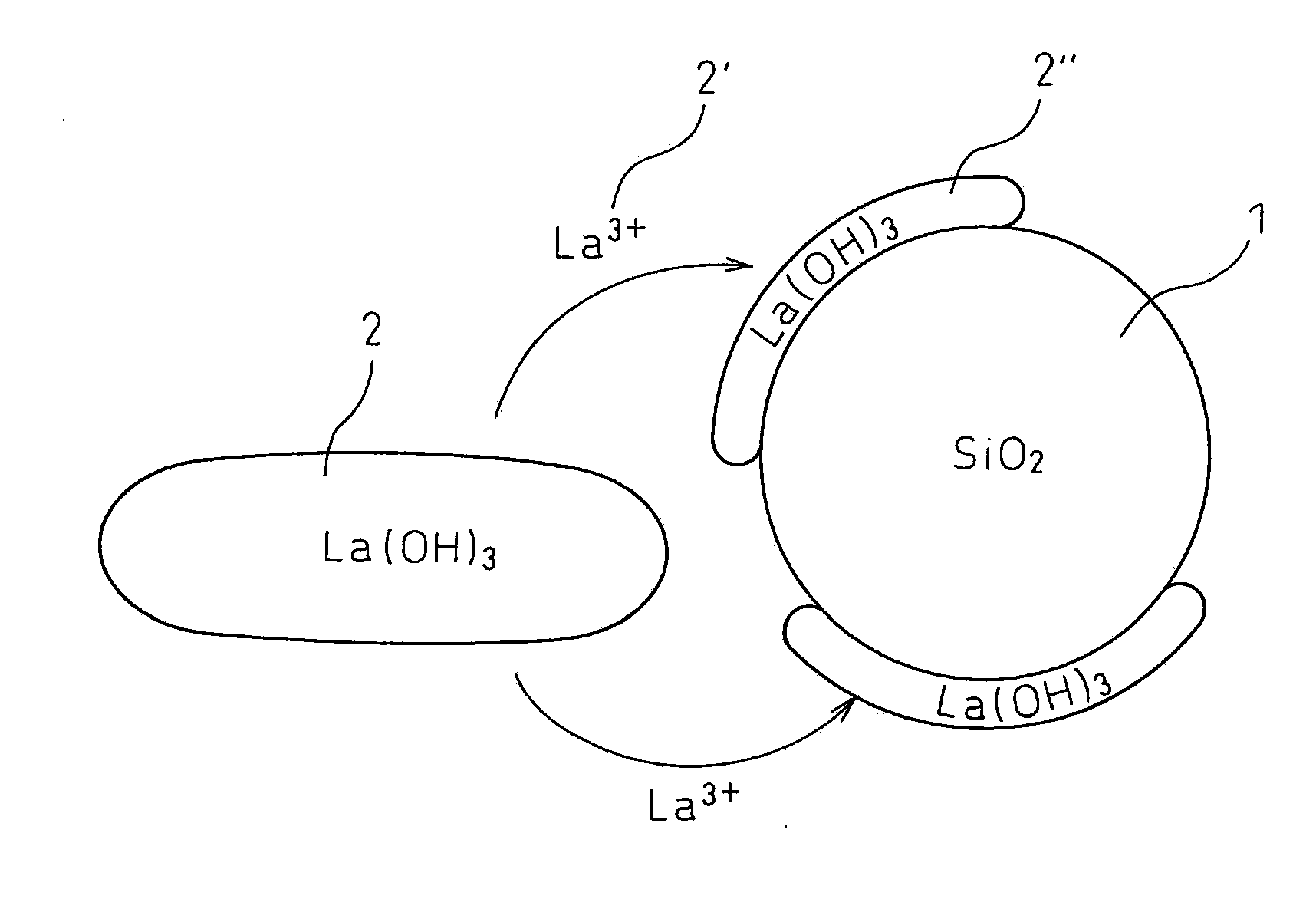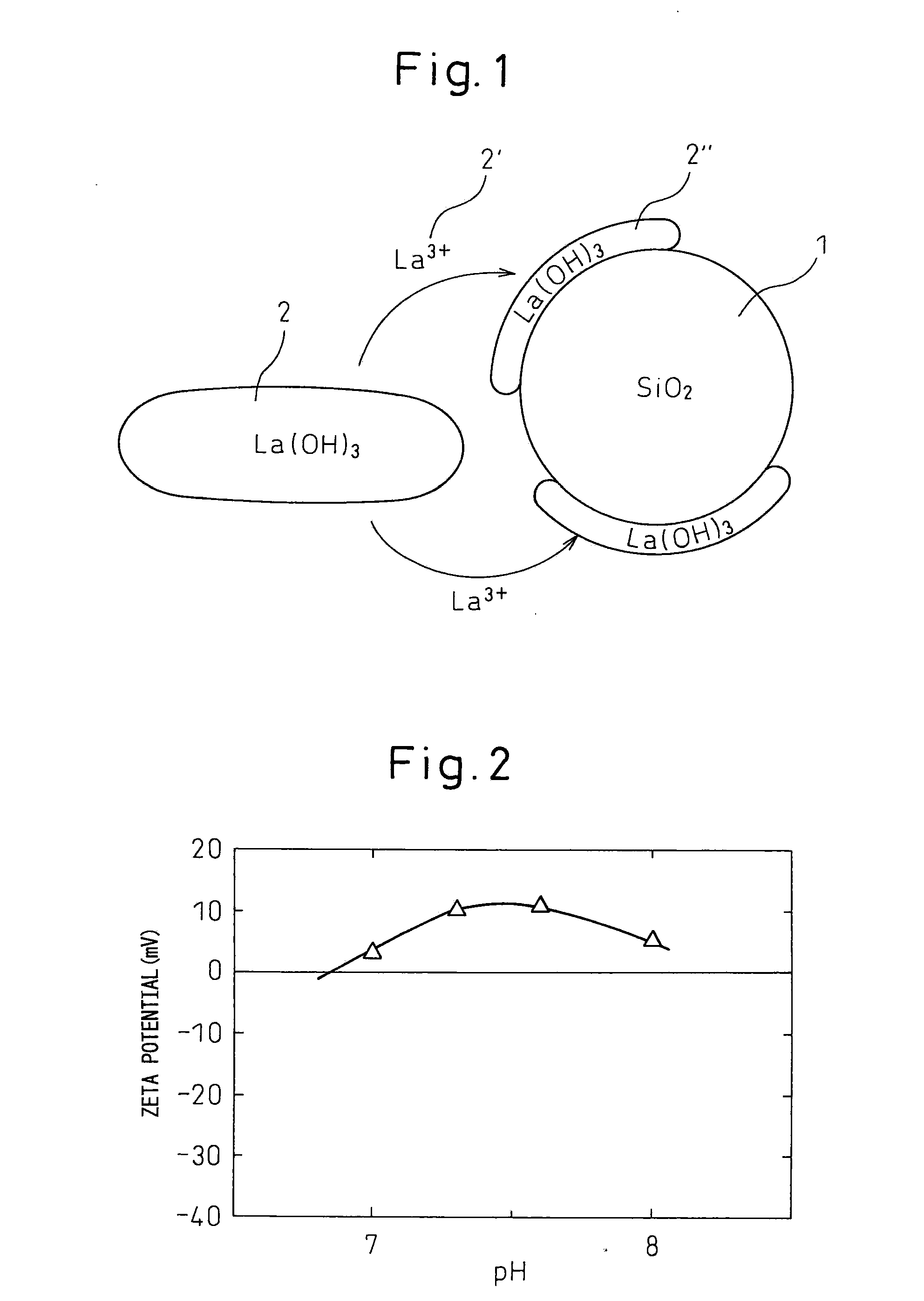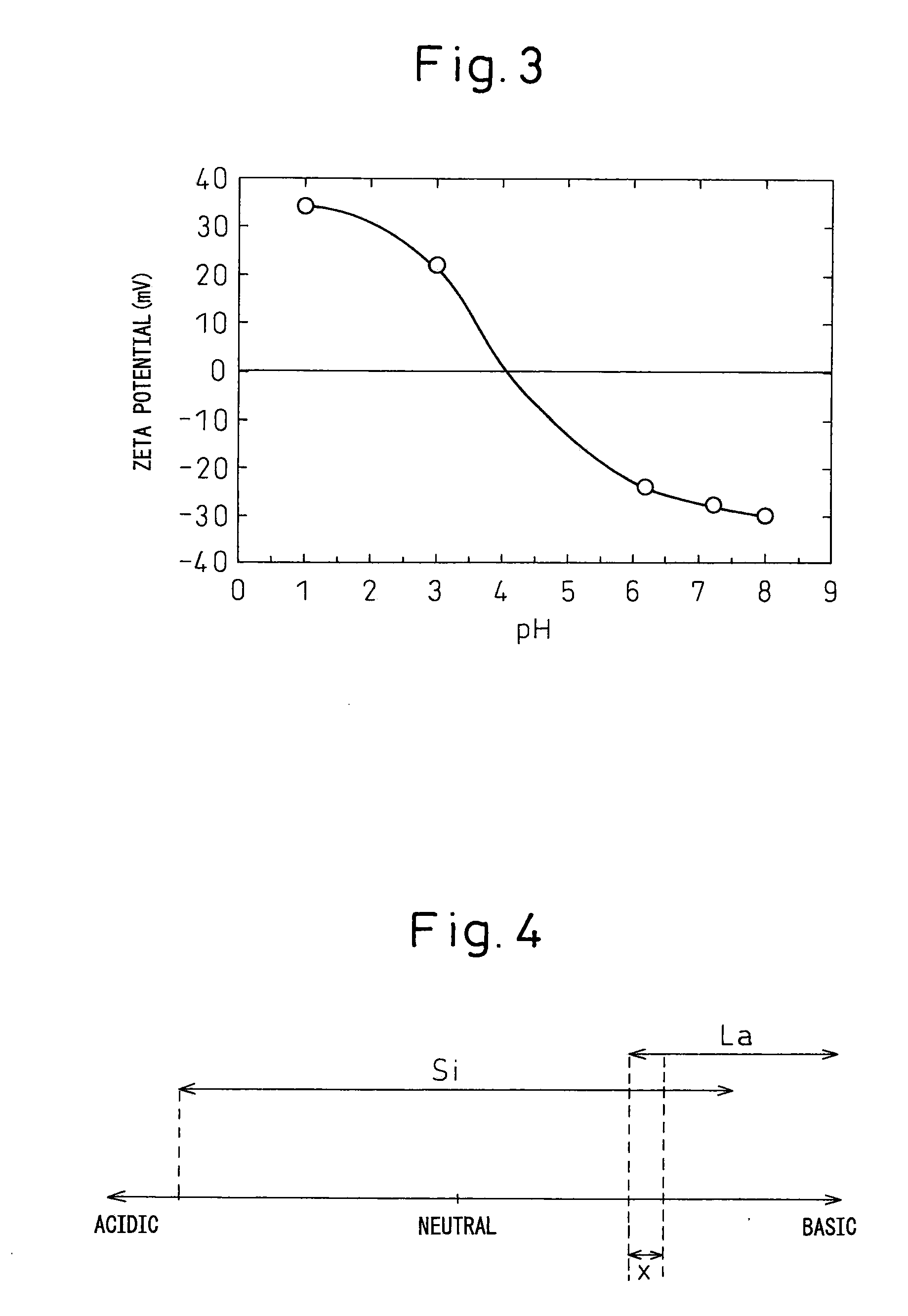Production process of composite metal oxide
a production process and metal oxide technology, applied in the direction of physical/chemical process catalysts, separation processes, catalyst carriers, etc., can solve the problems of difficult to obtain uniform composite metal oxide of a basic metal oxide, difficult to obtain acidic metal oxide such as silica and titanium, and difficult to obtain uniform precipitate containing both metals, etc., to achieve high heat resistance
- Summary
- Abstract
- Description
- Claims
- Application Information
AI Technical Summary
Benefits of technology
Problems solved by technology
Method used
Image
Examples
example 1
[0097]A lanthanum oxide-silica composite metal oxide catalyst support was produced as follows according to the process of the present invention.
[0098]A silica sol (SNOWTEX NXS, produced by Nissan Chemicals Industries, Ltd., average particle diameter: about 5 nm) was diluted with distilled water to obtain a diluted colloidal silica sol. A commercially available aqueous lanthanum nitrate solution was diluted with distilled water to obtain a diluted aqueous lanthanum nitrate solution. The diluted colloidal silica sol and the diluted aqueous lanthanum nitrate solution were mixed to obtain 10 L of an acidic mixed solution (pH: from 2.5 to 3.0) containing colloidal silica and lanthanum nitrate. In this mixed solution, lanthanum (La):silicon (Si) (molar ratio) was 62.5:37.5. The target yield was 350 g.
[0099]The pH of this mixed solution was adjusted to 8.5 by adding aqueous ammonia, and then maintained for 2 days (at this pH, about 1% of lanthanum is dissolved in the solution in an equilib...
example 2
[0100]A lanthanum oxide-silica composite metal oxide catalyst support was produced as follows according to the process of the present invention.
[0101]In the same manner as Example 1, 10 L of a mixed solution containing colloidal silica and lanthanum nitrate was obtained.
[0102]The pH of this mixed solution was adjusted to 10 by adding aqueous ammonia to generate a precipitate. The pH of the mixed solution containing a precipitate was adjusted to 8.5 by adding nitric acid, and then maintained for over 2 days. Subsequently, the pH was adjusted to 10 by again adding aqueous ammonia. The thus-obtained precipitate was, in the same manner as Example 1, filtered, washed with diluted aqueous ammonia having a pH of 10, again filtered, dried over one day, and then fired at 800° C. over 5 hours to obtain a lanthanum oxide-silica composite metal oxide catalyst support.
example 3
[0103]A lanthanum oxide-titania composite metal oxide catalyst support was produced as follows according to the process of the present invention.
[0104]A titania sol (STS-100, produced by Ishihara Sangyo Kaisha, Ltd.) was diluted with distilled water to obtain a diluted titania sol. Also, a commercially available aqueous lanthanum nitrate solution was diluted with distilled water to obtain a diluted aqueous lanthanum nitrate solution. The diluted titania sol and the diluted aqueous lanthanum nitrate solution were mixed to obtain 10 L of a mixed solution (pH: about 3) containing colloidal titania and lanthanum nitrate. In this mixed solution, lanthanum (La):titanium (Ti) (molar ratio) was 1:1. The target yield was 40 g.
[0105]The pH of this mixed solution was adjusted to 10 by adding aqueous ammonia to generate a precipitate. Furthermore, the pH of the mixed solution containing the precipitate was adjusted to 8.5 by adding nitric acid, and then maintained for 2 days (at this pH, about ...
PUM
| Property | Measurement | Unit |
|---|---|---|
| time | aaaaa | aaaaa |
| time | aaaaa | aaaaa |
| electronegativity | aaaaa | aaaaa |
Abstract
Description
Claims
Application Information
 Login to View More
Login to View More - R&D
- Intellectual Property
- Life Sciences
- Materials
- Tech Scout
- Unparalleled Data Quality
- Higher Quality Content
- 60% Fewer Hallucinations
Browse by: Latest US Patents, China's latest patents, Technical Efficacy Thesaurus, Application Domain, Technology Topic, Popular Technical Reports.
© 2025 PatSnap. All rights reserved.Legal|Privacy policy|Modern Slavery Act Transparency Statement|Sitemap|About US| Contact US: help@patsnap.com



